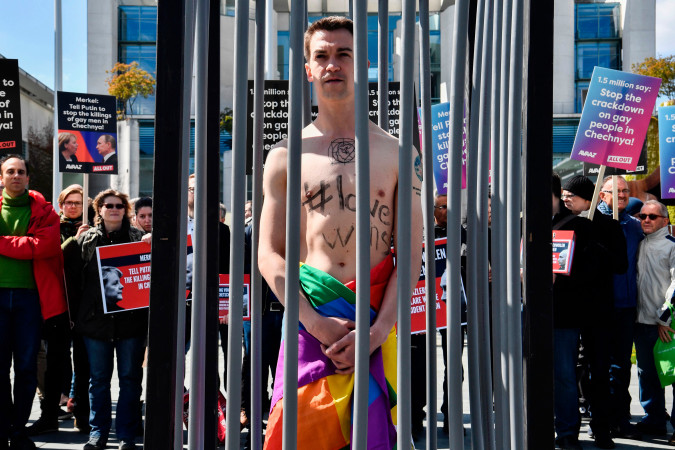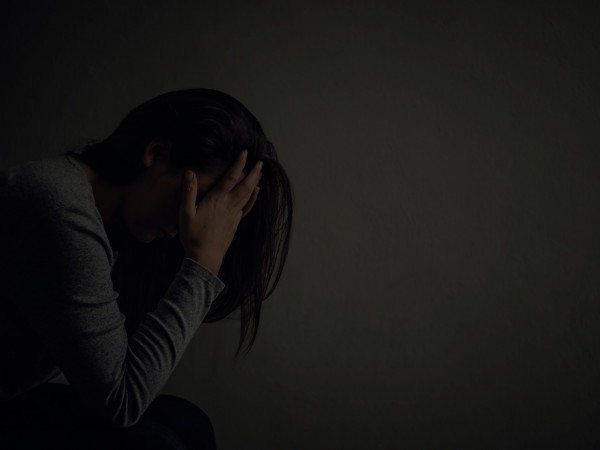Nafas LGBTI Azerbaijan Alliance: Advocacy campaign
Nafas LGBTI Azerbaijan Alliance presented the program of the advocacy campaign
30/Sep/21
4037
Nafas LGBTI Azerbaijan Alliance: Advocacy campaign
Nafas LGBTI Azerbaijan Alliance presented the program of the advocacy campaign.
Nafas LGBTI Azerbaijan Alliance planned an advocacy campaign for 2021. Focusing on LGBTI + and women's* rights this year, LGBTI+ rights organisation has developed an advocacy program on the 2017 "LGBTI+ hunt" and the expected decision of the European Court of Human Rights. We present the next steps and what Nafas LGBTI Azerbaijan Alliance said to Minority Azerbaijan as it is.
Nafas LGBTI Azerbaijan Alliance has been advocating for the protection of LGBTI+ rights and social inclusion in Azerbaijan since 2012. Nafas is an LGBTI+ human rights organisation that works with and for the community and sustains its activities in the country.
In 2017, police in Azerbaijan have conducted a violent campaign, arresting and torturing men presumed to be gay or bisexual, as well as trans* women. The campaign is known amongst the community as “LGBTI+ hunt”, as it was the first ever largest hunt of its kind carried out by officials in recent years.
In mid-September of 2017 the police have detained dozens of LGBTI+s on dubious charges, beating and using electric shocks on some of them to coerce bribes and information about other gay men and trans* women.
Nafas LGBTI have collected all the data about the international jurisprudence related to the 2017 anti-LGBTI+ campaign, and particularly, focused on laws and regulations related to sexual orientation and gender identity.
Generally, according the UN Special Rapporteur on Torture, the prohibition of torture and other ill-treatment enjoys jus cogens norm and remains absolute under any circumstances. The UN Body of Principles' first principle on protection under detention or imprisonment says that everyone who is deprived of their liberty must be “treated with humanity and with respect for the inherent dignity of the human person,” and there cannot be made a distinction of any kind in the realisation of it.
Discriminatory elements and the victim’s vulnerability are important factors in assessing torture and other ill-treatment. For example, General Comment No. 2 of the Convention Against Torture takes “discriminatory use of mental or physical violence or abuse” as an indicator, and refers to minority or marginalised individuals or populations amongst the most vulnerable. Furthermore, the vulnerability may arise, be influenced, caused, exacerbated, or alleviated through the mix of various personal or environmental factors. According the UN Special Rapporteur on Torture, when assessing whether the conduct amounts to torture and other ill-treatment, such assessment should take into account the association between “social marginalisation and other vulnerabilities, on the one hand, and an increased exposure to risks of torture and ill-treatment, on the other.”
Detention and custody sites are among such environments where the power asymmetry, stigmatisation, and discrimination combined with other factors constituting the vulnerability may increase the likelihood of torture and ill-treatment. For instance, as the Secial Parppoteur on Torture articulates, “persons deprived of their liberty are often wrongly seen as outcasts not deserving of sympathy, resources or protection, which leaves them exposed to a heightened risk of torture and ill-treatment,” and that vulnerability can be aggravated further by a mixture of other particularities. To that end, States must investigate allegations of torture and ill-treatment.
International jurisprudence and various human rights systems on sexual orientation and gender identity have stressed the vulnerability of LGBTI+s to torture and ill-treatment. For instance, according to the UN Special Rapporteur on Sexual Orientation and Gender Identity, environments where the person is criminalised, stigmatised, persecuted, or harassed on the grounds of real or perceived sexual orientation and gender identity; non-compliance with dominant norms of the society on gender and sexuality; in particular, situations where a State official(s) is involved, whether actively or by acquiescence, may all give rise to torture or ill-treatment.
Acknowledging the link between the violence and discrimination against LGBTI+s and the concept of prejudice helps to identify the social context in which the violence is manifested. For instance, in Azul Rojas Marin, a petition concerned with the rape of the detainee by the police officer, the Inter-American Commission on Human Rights (IACommHR) emphasised that the violence against LGBTI+s constitutes a “form of gender violence, driven by the desire to punish those who are considered to defy the norms of gender.” She further indicated that sexual violence could acquire a particular meaning when perpetrated against LGBTI+s since it can be used to punish and degrade the victims for who they are.
In the recent landmark judgment concerning the same case, the Inter-American Court of Human Rights (IACtHR) endorsed the same approach. The Court affirmed that the stereotypical insults relating to LGBTs and rape by the state actor indeed “reveal a discriminatory purpose, so that this was an act of violence based on prejudice,” and therefore constitutes an act of torture. Additionally, the IACtHR elaborated further on the meaning of the act of torture and ill-treatment by emphasizing that besides having a direct effect on the victim, the conduct also imparts a message to the whole LGBTI+ community which threatens “the freedom and dignity of this entire social group.”
When assessing the intentionality of the conduct and the severity of suffering resulted in turn, the IACtHR incorporates discrimination based on sexual orientation and gender identity into the purposive element of the definition of torture. To identify whether an act has been motivated by prejudice against LGBTI+s, the IACtHR has adopted the following indicators: “‘the pattern and characteristics of discrimination-based violence’; ‘discriminatory insults, comments or gestures made by the perpetrators during the commission of the conduct or in its immediate context, with reference to the sexual orientation or gender identity of the victim’ or ‘the absence of other motives.’”
The IACtHR has repeatedly emphasised States’ ex officio responsibility to promptly and effectively investigate allegations of torture and ill-treatment. Subsequently, the failure in acting with due diligence to investigate possible discriminatory motives may in se constitute a form of ill-treatment. If there are concrete signs or suspicions of violence on discriminatory motives, States are obliged to assess the possibility of such motives. The IACtHR’s standards in this regard are as follows: gathering and safeguarding the evidence; exploring all practical means to uncover the truth; and issuing “fully reasoned, impartial and objective decisions without leaving out doubtful facts that could indicate violence motivated by discrimination.” When establishing those standards, the IACtHR primarily relied on the jurisprudence of its European counterpart; for instance, Nachova and Others v. Bulgaria (43577/98 and 43579/98. Judgment of July 6, 2005); Identoba and Others v. Georgia (73235/12. Judgment of October 7, 2014); Begheluri and Others v. Georgia (28490/02. Judgment of January 7, 2015)
Powered by Froala Editor



